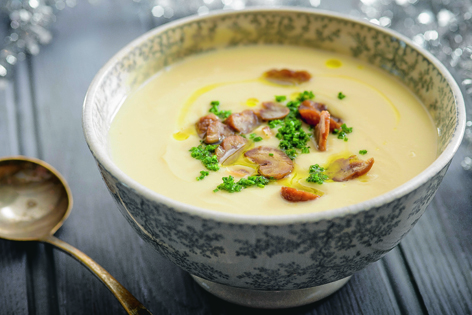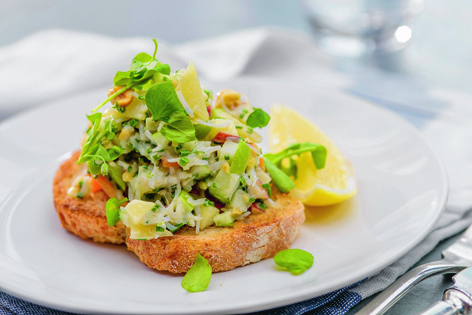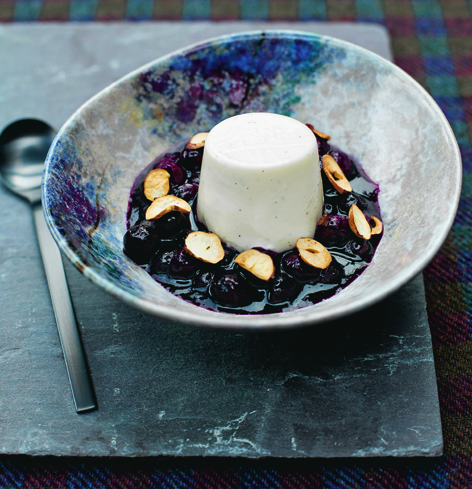Michelin-star chef Tom Kitchin inspires P&J readers to go on a culinary taste adventure by cooking with full-of-flavour nuts
As winter fast approaches, dishes I prepare become naturally heavier, warmer and heartier. There are so many ingredients that come into season now that really excite me.
I still get such an incredible thrill from cooking with the season’s best game, wonderful winter ducks like mallard and teal, as well as relishing the pleasure of preparing the first woodcock of the season. When it comes to complementing winter’s wonderful meats and fish, I always ensure I match the ingredients as nature intended.
Root vegetables like parsnip, celeriac and Jerusalem artichokes are a joy. Several different kinds of nuts are in season right now too, including chestnuts, hazelnuts and wet walnuts. They can really complement the flavours of the season, as well as adding texture, warmth and flavour to a dish.
My absolute favourite variety of winter nut is the chestnut. Just the smell of roasting chestnuts conjures up memories from my time in Paris where there were lots of street stalls selling bags of hot roasted chestnuts. I never could resist them and still smile at the thought of enjoying warm fragrant mouthfuls of that sweet, almost burnt flavour you can only get from fresh roasted chestnuts, eaten straight from the hot paper bag.
Today, I also love to use them in my cooking to add texture and sweetness to game dishes – particularly venison – and desserts. Dried chestnuts can also make a wonderful smoky addition to soups or stews.
Hazelnuts and cobnuts are grown in the UK from early autumn and when you cook or roast hazelnuts, they take on a lovely mellow, sweet flavour.
Whether you’re chopping them to garnish a salad, bringing a delicious burst of flavour to soups and stews or adding them to meat dishes, they can add real depth to your warming winter dishes.
CELERIAC SOUP WITH APPLE AND CHESTNUT
SERVES 4
1 white onion, sliced
2tbsp vegetable oil
1 celeriac, chopped
Juice of half a lemon
350ml chicken stock
250ml milk
1 apple, chopped
50g cooked chestnuts for garnish
1tbsp chopped chives to garnish
Heat the oil in a heavy bottom pan, and sweat the onions over a medium heat for 2-3 minutes until soft, but before they start to colour. Add the celeriac and sweat gently over a medium heat. If you place a lid over the pan for 3-4 minutes, it will create a steam and allow you to get a flavoursome result.
Add the juice of half a lemon, and the chopped apple – keeping a little aside for the garnish – and then cover the celeriac with the chicken stock and milk. Bring to the boil and heat for 15-20 minutes. If it starts to reduce down too much, add more milk and stock as required. Season with salt and pepper.
Once the celeriac is soft, add it to a blender, and blend until smooth. When you’re ready to serve, pour into deep bowls and add chestnuts, chopped apple, chopped chives, and a drizzle of
olive oil.
CRAB AND HAZELNUT MAYONNAISE
SERVES 4
FOR THE MAYONNAISE
2 free range medium egg yolks, at room temperature
1tsp Dijon mustard
25ml white wine vinegar
250ml hazelnut oil
Sea salt
Squeeze of lemon juice
FOR THE CRAB
200g crab meat
1 apple, diced
30g of diced celeriac
30g of diced neeps
30g of diced carrot
1tbsp chopped chives
1tbsp chopped hazelnuts
4 slices of sourdough toast
1 lemon to serve
To make the mayonnaise, put the egg yolks into a medium bowl with the mustard and wine vinegar and whisk together until evenly combined. Slowly drizzle in the hazelnut oil, whisking continuously as you do so, to emulsify the mixture. Once all the oil is added you should have a thick, glossy mayonnaise. Season with salt and add a squeeze of lemon juice to taste.
To make the crab, blanch the celeriac, neeps and carrots into salted water until they are just cooked. Once they are cooked, remove and place in iced water. Place the crab meat in a mixing bowl and season lightly with salt. Add the mayonnaise, but ensure you add just enough to bind the crab, then mix in the celeriac, neeps and carrots, then add the chopped chives, diced apple and chopped hazelnuts. Season to taste.
Toast the sourdough bread, then drizzle over some of the hazelnut oil over the toast. Place the crab on top, then serve with a wedge of lemon on the side.
PANNA COTTA WITH BLUEBERRY COMPOTE
SERVES 4-6
A little sunflower oil for oiling
2 x sheets of leaf gelatine, 4g each
150ml whipping cream
Half a vanilla pod, split and seeds scraped out
Finely pared zest and juice of half a lemon
40g caster sugar
180ml buttermilk
150g shelled cobnuts
FOR THE BLUEBERRY COMPOTE
250g blueberries, washed
1tbsp of lemon juice
40g of sugar, or to taste
Lightly oil 4-6 non-stick dariole or other small moulds, about 3.5cm in diameter and 5cm deep. Soften the gelatine leaves in a dish of very cold water for 10 minutes. Meanwhile, pour the cream into a heavy-based pan and add the vanilla pod and seeds, lemon zest and sugar. Heat slowly over a low heat and then simmer gently for 5 minutes.
Remove the pan from the heat. Immediately squeeze the gelatine leaves to remove excess water and add them to the hot cream mixture, stirring until fully dissolved. Pass the mixture through a fine sieve into a shallow container. Refrigerate until cooled to just warm, but not set. Finally, whisk in the buttermilk, followed by the lemon juice. Transfer the panna cotta mixture to a jug and pour evenly into the prepared moulds. Chill for 4-6 hours, or until set.
In the meantime, finely slice the cobnuts using a mandolin and toast in a preheated oven at 180°C/Gas 4 for 3-4 minutes until golden. Tip the nuts onto a plate and leave to cool.
For the compote, put the blueberries, lemon juice and sugar into a small pan and cook over a medium-high heat for 3-5 minutes until the berries start to burst and release their juice. Taste for sweetness, adding more sugar if needed. Cool slightly.
To unmould each panna cotta, briefly dip the base of the mould in hot water and upturn into a shallow bowl – the panna cotta should be release quite easily. Surround with the blueberry compote and finish with the toasted cobnuts.



